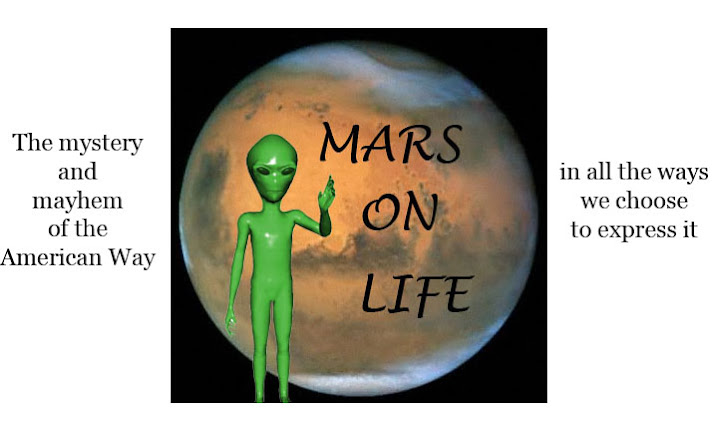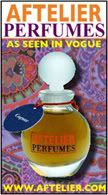An Alameda, California company is the first to produce absinthe in the United States since the ban of 1912. Earlier this week, St. George Spirits sold its first bottle of the herbal spirit after the Alcohol and Tobacco Tax and Trade Bureau approved its label.
A favorite sip of Belle Époque artists, absinthe was said to cause deleterious psychoactive effects. Per Wiki, "Absinthe (also absinth, absynthe, absenta) is a highly alcoholic (usually 68 to 80 percent) anise-flavored spirit dervied from herbs including the flowers and leaves of the medicinal plant Artemisia absinthium, also called Grand Wormwood or Absinth Wormwood. Absinthe is typically green (either naturally or with added color) or clear and is often referred to as la Fée Verte ('The Green Fairy')."
Absinthe gets its reputation from the chemical thujone, a wormwood extract that in large quantities can cause renal failure and death; temperance movements of the early 20th century claimed that the wormwood in absinthe was responsible for behavioral degeneration that played out in psychosis and excessive violence.
The drinking of absinthe and its psychological effects is the subject of paintings b y Viktor Oliva, Degas, Picasso, and Albert Maignan among others. None of the paintings manifests textbook aberrant behavior or any deviance; in three of the works the drinker seems painfully introspective.
y Viktor Oliva, Degas, Picasso, and Albert Maignan among others. None of the paintings manifests textbook aberrant behavior or any deviance; in three of the works the drinker seems painfully introspective.
The drinker in Maignan's Green Muse (right) reels off balance, while an intensely focused fairy grips him at the forehead and temple. He has either been caught while stoking his stove or he has risen from his desk to struggle with the onset of the episode; the random distribution of the disarrayed papers suggests emotional disorder. The fairy rises as maleficent smoke from the broken bottle, which rests on its side on the floor. As she ascends, she materializes in anthropomorphic form. His staggering gait and uncertain posture indicate that he has been overcome by a toxic cloud, with his half-closed eyes representing his transport from reality into an altered, agonized dream state. Despite the portrayal of the fairy as human, this is the most dramatically active and literal of the absinthe paintings viz the political charges and the only one that suggests the physiological changes ascribed to wormwood. The drinker claws at the right side of his face and struggles to regain his equilibrium as the fairy claws at his scalp. One gets the sense that he might bolt from his study and undertake a rampage in the streets of Paris.
In Oliva's Absinthe Drinker, the fairy is a placid, transparent hallucination who perches quietly on the edge of the table; the gauzy quality makes her seem dangerous as a water sprite, whereas Maignan's figure had a poltergeist-like mien. Her presence is signaled by an emotional shift that is also portrayed in the work of Degas and Picasso, without bringing about a physical reaction.
With his glass in front of him, the subject takes what we might term an "absinthe posture," his palm against his temple, his shoulders slumped. Interestingly, his gaze does not confront the phantom but rather the painter, willing the painter to witness and acknowledge the apparition that the drinker has conjured. His expression is wry; he seems well aware of the tariff he has paid. Again, the fairy is missing the lower half of her legs. Her upper body, as with the body of the Maignan fairy, has lush dimensions suggesting a fertile, sexual context to the alcohol-induced state.
Picasso's thin-lipped subject (The Absinthe Drinker) contorts herself into a hug, not letting go of the grip on her face as she reaches around to encircle her upper torso in an unnatural, protective posture. Her hands also appear as claw-like, but in this instance they are skeletal, as if the flesh of reality has been stripped away, leaving only a raw-boned metaphor of fatality. The emphasis on the crone-like structure of the hands remarks on both the subject's former and present isolation. It also provides a statement about the ongoing disintegrative loss of the individual relative to his society. Contrasted to the subjects of both the Maignan and the Oliva, the Picasso drinker seems stoic and not nearly so overwhelmed or amused, as if she has acccepted apartness as a fait accompli of the human experience. Her stance rejects interference from the outside world; the absinthe drinker is generally portrayed at a distance from the world rather than being a full part of it.
Degas' glum, down-at-the-mouth female drinker (L'Absinthe) also adopts a slumped posture, but her hands are not detailed. There is no interaction or connection between her and the disreputable- looking man, an emotional climate that displays the absinthe drinker's alienation from his or her surroundings. Her seated posture is careless and slightly un-ladylike, her knees apart underneath her dress. She broods, unconcerned with the soiled state of her attire, her moral values reflected in the louche quality of her posture. This position is almost that of a disgruntled child, or someone with stunted emotional growth and awareness. The light and shadow tell us this scene takes place in the early morning, when the woman has wandered into a café setting that serves to reveal more about her anonymity and her distance from society.
looking man, an emotional climate that displays the absinthe drinker's alienation from his or her surroundings. Her seated posture is careless and slightly un-ladylike, her knees apart underneath her dress. She broods, unconcerned with the soiled state of her attire, her moral values reflected in the louche quality of her posture. This position is almost that of a disgruntled child, or someone with stunted emotional growth and awareness. The light and shadow tell us this scene takes place in the early morning, when the woman has wandered into a café setting that serves to reveal more about her anonymity and her distance from society.
All of the absinthe paintings drew moralistically on the growing opposition to the spirit, which was largely banned by the time of the First World War. The Degas painting seems the most indicting and intemperate; the woman's drinking of absinthe is clearly associated with a low, notorious lifestyle. There is a direct line of flight between between the judgmental tone of the paintings and the anti-marijuana art movement some thirty years later.
Recent tests conducted on historical absinthe show that the percentage of thujone was not a factor in either psychotic or homicidal behaviors. These findings paved the way for the manufacture and distribution of the St. George absinthe in the United States.
The St. George Spirits Absinthe will go on sale on December 21st for $75.00 per 750-ml bottle
Cheers!
Link: San Francisco Chronicle
Link: St. George Spirits
Thursday, December 6, 2007
Absinthe Yourself
Labels:
Absinthe,
St. George Spirits
Subscribe to:
Post Comments (Atom)









13 comments:
The tango pirates are getting their roses out so they can dance with them in between their teeth and rejoice!
I think all those drinkers look grim because it tastes bad!
Heather, you are a true adventurer! Salut! You of course have the style to decant it property!
WB, comme toujours, you have cut to the quick of the issue. Do you not like an anise note? It's all the rage now in the scented kingdom, and also on fish.
Ha ha! I'm actually into the anise but most people I know can't stand it! I'd raise a glass of absinthe with you any day! But it would be bad if we looked all mopey after.
This is a really interesting and great post. Really.
WB, a bit of anise will take the chill off the bones. I don't recommend pairing it with fish however (fennel); I had this with halibut and the fish was too sweet.
BB, thank you for your kind words! You're no slouch yourself!
We just did Absinthe shots on my hubbys birthday. Quite the riot, and hangover.
Miss Symmetry, it's the same with chartreuse. Speaking from experience...
Never again. Oh the badness! The kissing of bad men! The next morning hangover tourettes!... LLG xx
LLG, LOL!!!
Bad men + green booze=Oh, the inhumanity.
I just tried it for the first time last night, they've recently legalized it in Las Vegas. It was slightly overrated...I didn't hallucinate, just a mild buzz...perhaps you had to drink a lot?
It tastes of black licorice...I couldnt even drink the last sip, it tastes quite bad.
This is such a beautifully written post. Were you an Art History major?? On to more pressing matters - do you want to write my paper for me?
:)
No art history, Riz. I did study a bit of archaeologoy and architecture, but then again, what didn't I study?
Your paper is over my head, I'm afraid, but I would love to read it when it is finished.
Post a Comment